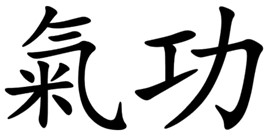
Qigong for Cancer Survivors with the “QiGang”!
March 1st, 2023: Qigong Six-Week Challenge Kick-Off!
Practice: Lee Holden's Qigong: 30-Day Challenge (Days 1-5)
"QiChat with the QiGang" Discussion- Wednesday, March 1st.
Recorded audio available here: https://us02web.zoom.us/rec/sh...
Challenge:
- Practice 7-minutes or more of Qigong at least 5 days per week. The main intent of the challenge is to develop consistency with the practice.
- Log your participation on the A.S.S./A.S.S.i.s.t./Cumulative Log Sheets.
- Feel free to use other videos/practices. If you find videos (i.e., YouTube) that resonate with you, feel free to share (provide title/presenter of video, URL, length of video, any any comments you care to share about the video and I will add it to the attached "Qigong with the QiGang Resource Page".
- We will meet at least once a week for practice (typically, prior to "Gentle Yoga for Cancer Survivor" sessions. Plus, I will schedule occational Qigong-only sessions after which there will be an optional discussion.
Tim's Tips:
GREAT BOOK - Qigong: Essence of the Healing Dance by Garri Garripoli
The first six chapters, I think, are absolutely marvelous... and have greatly impacted my current understanding of the practice.
www.amazon.com/Qigong-Essence-...
1. Find your own pace. After becoming familiar with a particular movement I find it helpful to follow my own pace/rhythm and not trying to stay in synch with the facilitator or others.
2. Focus on the Breath. "The breath is supreme." I heard this phrase from one of the videos I watched and find it helpful to focus as much, and sometimes more, on my breath (belly breathing) and not the movement. It seems for me the movement comes more naturally as I focus more on the breath than the movement. See Quote 1 below.
3. Connect and coordinate the movement with the breath. Upward movements are typically coordinated with the inhale, downward with the exhale. Movements toward the body are coordinated with the inhale, movements away with the exhale. Coordinating breath and movement provides greater flow.
4. Involve and Engage as much of your body as seems right for you.
I find it helpful to engage as much of my body as seems appropriate. Particularly, the arms, the spine, the waist, the legs.
5. Make it a Habit. Personally, I find greater benefit from practicing about 20-minutes five days a week than for longer sessions but not as often!
6. Think less about WHAT you are doing, simply enjoy WHY you are doing it. I try not to worry so much about doing the movement correctly, perfectly. Instead, I simply do my best and what feels right and that brings joy and relaxation. See Quote 2 below.
7. Practice many different styles as you develop your own personal practice. Although we are focusing on Lee Holden's Qigong: 30-Day Challenge to provide a common reference point during our time together, I encourage you to incorporate other videos, teachers, and practices. If you find one that resonates with you that you would like to share, forward the details (title/presenter, URL, approximate length, summary) to me and I'll add to a resource page. See quote #3 below.
Quote 1: “I won’t go into the dozens of ways that I’ve learned to breathe as I don’t feel it ultimately matters. Breathe deep. Suck in your belly and diaphragm as far as you can while you exhale. Extend your belly and diaphragm when you inhale. Breathe deep. Qigong can literally translate from the Chinese as “breath work” in one sense. Breathe deep. Imagine energy, Qi, coursing through your body with each exhale. Imagine Qi filling your body through every pore as you inhale. Breathe deep. Master Duan reminds me that it is good to keep your mouth gently closed and only breathe through your nostrils, but he is also quick to remind me that we must become conscious of breathing through our skin while we play Qigong. I remember from my premed courses that the skin is in fact the largest respiratory organ. Breathe deep. Let your shoulders drop, allow a wave of calm to pass through your body. Breathe deep. Expand the image of your body to extend deep into the planet and far into space. Breathe deep. Sense the connection of your being to all things; we are a unified field of infinite energy. Breathe deep. Allow your heart to smile. Breathe deep. This is Qigong.”
Quote 2: "The concepts related to Qigong and healing that I have written about in this book are a little like a butterfly's wings in that way - if you "touch" them too much, get too caught up in specific details, they may lose their ability to fly."
Quote 3: “It is healthy to study many different Qigong systems, and you should gain experience. It’s not that any one is better than any other, it’s just that some will resonate for you and thus prove more effective int your work.”
PLEASE JOIN US MONDAY, MARCH 6th at 445P for Days 6-10 and another "QiChat with the QiGang"!
SEE ATTACHED PDF FOR RESOURCES!